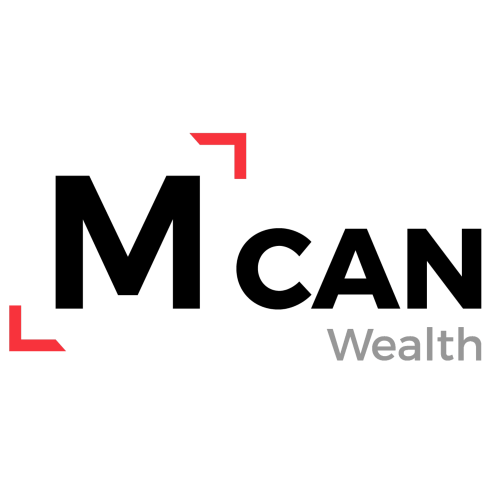sponsored
MCAN Wealth 1-year non-registered GIC
- Interest rate: 5.10%
- Minimum amount: $1,000
- Eligible for CDIC coverage: Yes
Is a TFSA really tax-free?
TFSA contributions won’t reduce your taxable income and generate a tax refund, unlike registered retirement savings plan (RRSP) contributions. However, where you do save on taxes with a TFSA is that the return you earn inside your TFSA is not taxable. That means income from things like interest, dividends or capital gains aren’t subject to income tax. Any income earned in the account—even when it is withdrawn—is generally tax-free. We say “generally” because foreign dividends, for example, may be subject to withholding tax, but the dividends don’t go on your tax return. (Not sure where to invest? Read TFSA vs RRSP: How to decide between the two.)
How does TFSA contribution room work?
Your TFSA contribution room is the maximum amount you can contribute to your TFSA for any given year. Your contribution room and your age affect the amount of contribution room you have. Unlike your RRSP contribution room, the contribution limit does not depend on how much income you earn. You begin accumulating TFSA contribution room from the year you turn 18 (as long as you are a resident of Canada), even if you didn’t file an income tax return that year or have a TFSA yet.
Your contribution room is the total amount of the following:
- The TFSA dollar limit for the current year
- Any contribution room you have leftover from previous years
- Any withdrawals made from your TFSA in the previous year
The TFSA contribution limit for 2024 is $7,000. If you turned 18 before the year 2009 and have never contributed, your maximum lifetime TFSA contribution limit is $95,000. If you take money out of your TFSA, you get that room back on January 1 the following year. Just don’t go over your limit or make the mistake of thinking you get your TFSA room back for withdrawals right away.
TFSA contribution limits by year
Below, you’ll find the annual contribution limit for each year since the inception of the TFSA in 2009. Each year, the new annual limit is indexed to inflation and rounded to the nearest $500. There’s one exception: in 2015, the limit increased from $5,500 to $10,000; it was lowered to $5,500 again the following year.
| Year | TFSA annual limit | TFSA cumulative limit |
|---|---|---|
| 2009 | $5,000 | $5,000 |
| 2010 | $5,000 | $10,000 |
| 2011 | $5,000 | $15,000 |
| 2012 | $5,000 | $20,000 |
| 2013 | $5,500 | $25,500 |
| 2014 | $5,500 | $31,000 |
| 2015 | $10,000 | $41,000 |
| 2016 | $5,500 | $46,500 |
| 2017 | $5,500 | $52,000 |
| 2018 | $5,500 | $57,500 |
| 2019 | $6,000 | $63,500 |
| 2020 | $6,000 | $69,500 |
| 2021 | $6,000 | $75,500 |
| 2022 | $6,000 | $81,500 |
| 2023 | $6,500 | $88,000 |
| 2024 | $7,000 | $95,000 |
What happens if you overcontribute to your TFSA?
If you exceed your contribution limit, you’ll be subject to a 1% penalty tax per month. Luckily, this 1% tax only applies to the amount that’s been overcontributed, not the whole account value.
What can you hold in a TFSA?
Qualified investments for TFSAs include:
- Cash (money): This includes literal cash, as well as money market mutual funds. Only government-issued cash qualifies, meaning cryptocurrency is not an registered-eligible investment.
- Guaranteed investment certificates (GICs): GICs pay guaranteed interest rates for a specified term. You can buy a GIC with cash inside your TFSA.
- Mutual funds: A mutual fund pools together investments from many investors to purchase a basket of assets, usually stocks or bonds. Mutual funds can be actively or passively managed, and their fees vary accordingly.
- Exchange-traded funds (ETFs): ETFs track, or mimic, various stock indexes, and their units trade on stock exchanges. You can choose from actively and passively managed ETFs, both of which are registered-eligible.
- Bonds (both corporate and government-issued): Investors can buy individual bonds in a registered account, although it is more common to own bonds through a mutual fund or ETF.
- Stocks (also called equities or securities) listed on a designated exchange: This generally includes stocks on the Toronto Stock Exchange, the New York Stock Exchange or NASDAQ exchange. There are other North American stock exchanges, though, and technically any stock that trades on a recognized stock exchange qualifies. Foreign, non–North American securities are most commonly purchased by buying their American Depositary Receipts (ADRs) on a U.S. exchange.
Read more about GICs as a good investment:
This article is presented by an advertising partner.
This is an editorially driven article or content package, presented with financial support from an advertiser. The advertiser has no influence on the creation of the content.


